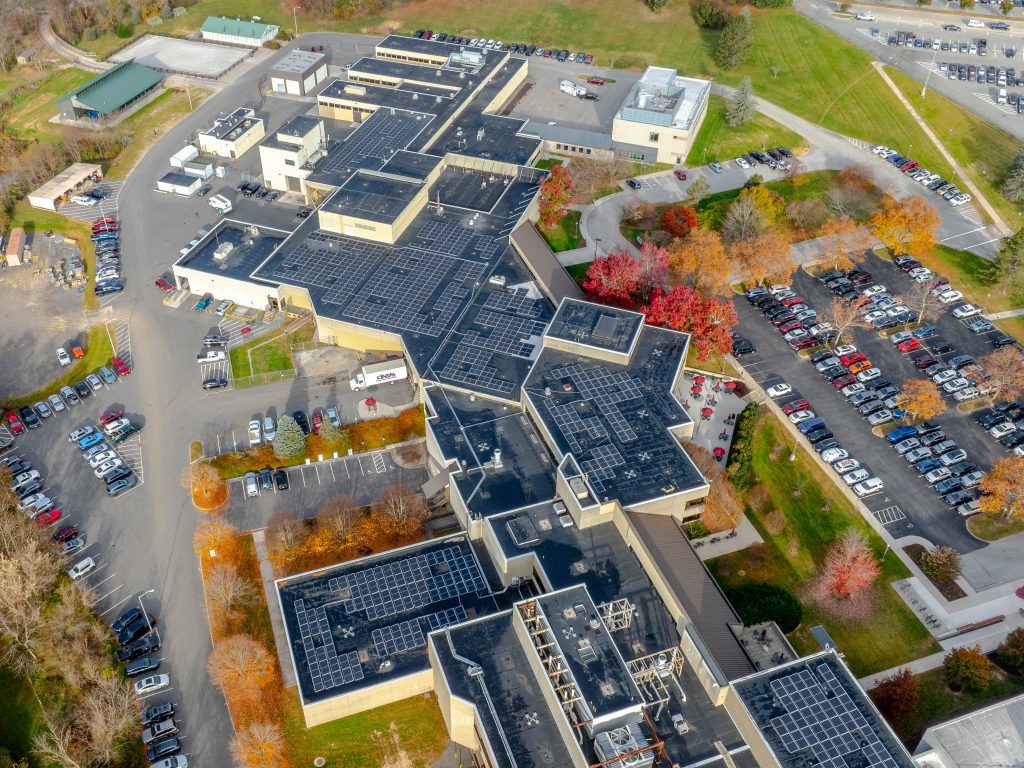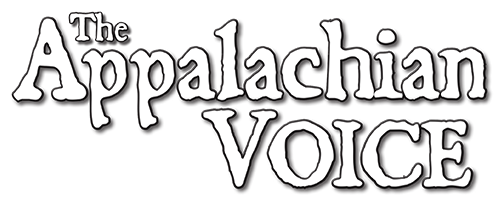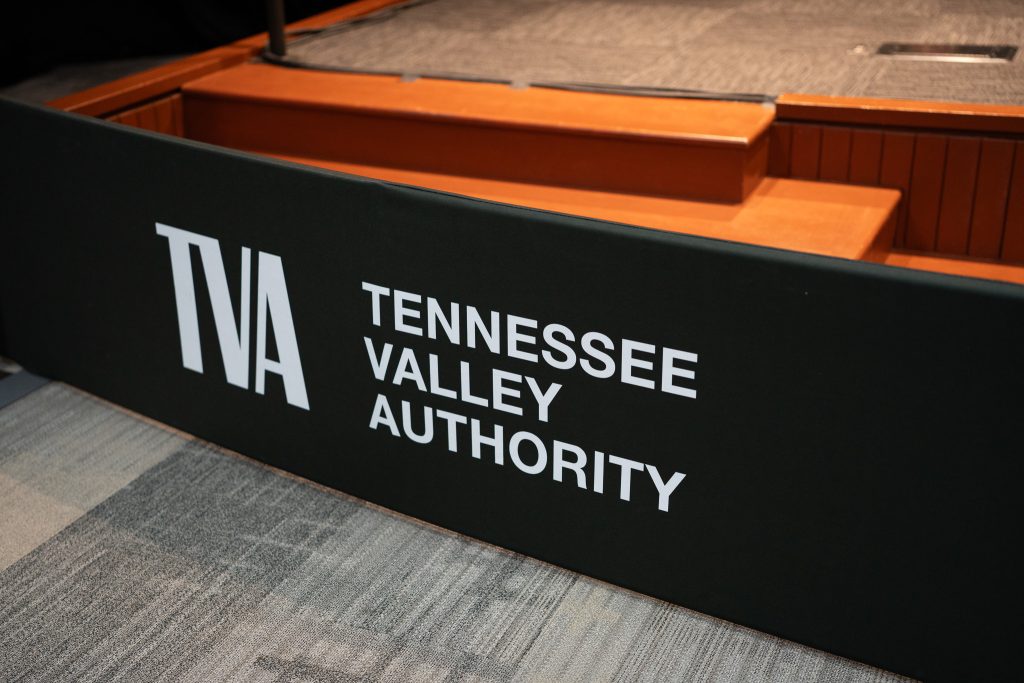Virginia Tech’s Solar Projects Power Campus Toward Carbon Neutrality Goal

By Kayla Masterman
As part of its commitment to sustainability, Virginia Tech has taken a significant step toward reducing its carbon footprint by completing four solar arrays totaling 1.2 megawatts on building rooftops across its Blacksburg campus in fall 2024.
The four solar arrays are located on top of Sterrett Center, Durham Hall, the Virginia-Maryland College of Veterinary Medicine and McComas Hall.
The arrays generate approximately 2,300 megawatt-hours annually, with weather and cloud cover being variables in production. This is equivalent to the energy consumption of approximately 215 to 220 average residential homes.
Installed in September 2024, the project became operational in November, marking progress toward the university’s broader goal of clean energy expansion.
“It was several years in the making — a lot of negotiating and stakeholder engagement around how that was to happen,” says Stephen Durfee, associate director for campus energy management. “You’ve got to start somewhere, and this is how you do it.”
Durfee oversees a team of energy engineers, technicians, field engineers and program managers who work to improve energy efficiency on campus.
“We work together to identify the wasteful areas where we don’t benchmark well,” Durfee said. “Once we figure out why, we develop solutions.”
Mark Owczarski, interim vice president for communications and marketing, said the project aligns with the university’s Climate Action Commitment, which aims for carbon neutrality by 2030 and a transition to 100% renewable electricity.
“It’s a commitment to responsible energy use and recognizing that fossil fuels have a limited supply and consequences,” Owczarski says. “These projects aren’t just about reducing emissions — they also create learning environments and spaces for students to engage.”
According to the Climate Action Commitment, a key component of the plan is to “achieve 100 percent renewable electricity by 2030.” The solar array project moves the university closer to that goal.
“This project is part of a larger plan that benefits business, teaching, research and the environment,” Owczarski says.
Virginia Tech’s sustainability efforts extend beyond Blacksburg. Owczarski pointed to the university’s newly opened Innovation Campus building in Alexandria, Virginia, as another example of sustainable design.
“If you take a real close look at that building — the windows and all that stuff — what you’re actually looking at are little teeny solar panels,” Owczarski says. “The panels make the building look beautiful, and they’re collecting energy.”
He emphasized that sustainability initiatives are part of a broader strategy across all Virginia Tech campuses.
“Educating the engineers who are going to make the next generation of energy makers is part of what we do,” Owczarski says.
Durfee noted the importance of early stakeholder engagement in sustainability projects.
“There’s always pushback from someone, but working through concerns and reaching agreements is key,” he says. “The more successful solar installations we see in the region, the easier it becomes for others to manage risk by learning from those patterns of success.”
When pitching the project, Durfee said the university looked to peer institutions in the Appalachian region for inspiration.
“We absolutely pointed to some peers — other schools, towns and municipalities that have successfully implemented solar design, installs and operations.”
Owczarski added that long-term analysis and review will demonstrate the project’s return on investment.
“It is not only good for the environment, but it’s also good for business because it can lower our bills over time after the initial investment,” Owczarski said. “It provides energy sources that are controllable, which will help economically.”
A third-party solar developer owns and maintains the solar arrays and sells the energy to Virginia Tech through a power purchase agreement.
Owczarski explains how a $500,000 grant from the Virginia Department of Energy helped lower the power purchase agreement cost per kilowatt-hour. Due to this agreement, Virginia Tech now gets about 1.2% of its campus energy from clean sources and saves around $45,000 a year compared to regular market rates.
Looking ahead, Durfee explains that Virginia Tech is “absolutely looking at much larger solar installations.”
The project has generated excitement among sustainability groups on campus.
“We are very pleased to see that the project moved forward and was completed,” Durfee said.
CORRECTION: This article initially incorrectly stated that Virginia Tech installed four 1.2-megawatt solar arrays and has been corrected to note that the university installed four solar arrays totaling 1.2 megawatts.
Related Articles
Latest News
More Stories

Leave a comment
Your email address will not be published. Required fields are marked *
One response to “Virginia Tech’s Solar Projects Power Campus Toward Carbon Neutrality Goal”
-
I mean really, who needs power for, say, lighting, when it’s dark.





Leave a Comment